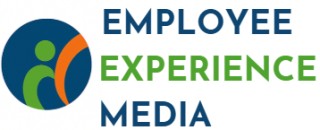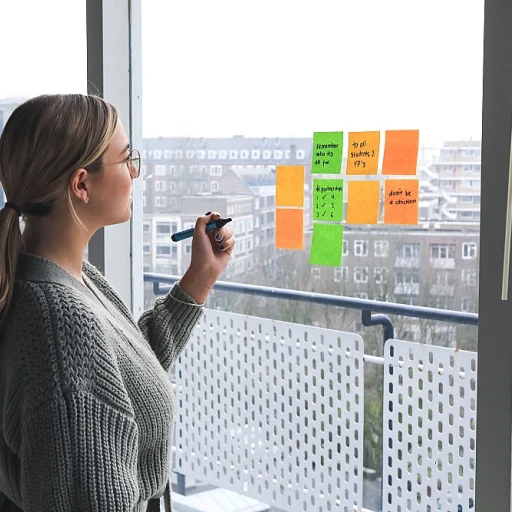
Understanding the Smarter Workplace
Embracing the Evolution of Work Environments
As businesses continue to adapt to the challenges of the modern workplace, understanding the characteristics of a smarter workplace becomes essential. This evolution stems from a need to create work environments that not only enhance employee experience but also drive productivity and satisfaction.
In today's dynamic world, the concept of a smart workplace is driven by the integration of technology and human-centered approaches. It's about creating a balance where employees are empowered through seamless access to digital tools, fostering an environment where collaboration and innovation thrive.
By leveraging workplace technology, such as smart offices and hybrid workplace solutions, organizations are redefining how space management operates. The intelligent use of data-driven insights allows companies to optimize office spaces, create efficient meeting rooms, and facilitate real-time collaboration.
Integrating smart technology in the workplace isn't just about having the latest gadgets. It's about strategically utilizing technology to enrich the workplace experience. This approach ensures employees are supported in both a digital and physical landscape, crucial in hybrid work settings where remote and in-office frameworks meet.
Moreover, crafting a smarter workplace requires solutions that are agile and adaptable. This flexibility enables employees to navigate seamlessly through various work environments, embodying a hybrid workstyle that supports their roles optimally both in time efficiency and space utilization.
The Role of Technology in Enhancing Employee Experience
The Impact of Smart Technology in the Workplace
In today's fast-paced business world, the integration of technology within the workplace is no longer a luxury but a necessity. Smart technology plays a pivotal role in enhancing employee experience by streamlining processes, boosting productivity, and fostering collaboration amongst teams.The advent of workplace technology provides employees with solutions that facilitate a more efficient and effective work environment. From digital tools that aid in project management to office spaces embedded with smart technology, businesses are becoming more adept at meeting the ever-evolving demands of their employees.
- Communication Tools: Modern workplaces leverage digital platforms that enable real-time communication and collaboration, essential for hybrid work environments.
- Data-Driven Decisions: Smart workplaces utilize data to make informed decisions regarding space management, ensuring that office resources are optimized for maximum productivity.
- Automation Solutions: By automating routine tasks, employees can focus on more strategic and creative work, thus enhancing job satisfaction and reducing burnout.
Designing Workspaces for Productivity and Well-being
Designing Spaces that Encourage Optimal Performance
When it comes to boosting employee productivity and well-being, the physical workspace plays a crucial role. In an era where hybrid work and smart workplace strategies are becoming the norm, crafting an environment that caters to both flexible arrangements and structured setups is key. Making use of smart technology and data-driven solutions can help businesses create spaces that adapt to various needs. This includes deploying digital signage, smart office tools and adaptive space management systems, which ensure efficient use of resources. Workspaces designed with an emphasis on collaboration and hybrid work can significantly enhance the employee experience. Flexible meeting rooms and an intuitive layout encourage seamless communication and creativity among employees. Furthermore, integrating workplace technology that offers real-time data insights allows businesses to continuously optimize their environments. By designing offices that support both physical and digital interactions, companies can provide a simply smarter workplace that promotes productivity and employee satisfaction. For a deeper dive into finding workspaces that embody these principles, exploring employment opportunities in Farmersville can offer valuable insights into how modern workplaces are evolving.Fostering a Culture of Continuous Learning
Creating a Culture of Learning and Growth
Fostering a culture of continuous learning is crucial in building a smarter workplace. Employees are at the heart of any organization, and empowering them with opportunities to learn and grow not only enhances their experience but also drives the business forward.
Incorporating smart technology and tools, companies can provide employees with the resources they need to develop their skills in real time. Online platforms and digital solutions allow for flexible learning, catering to hybrid work environments where traditional, in-person training sessions might not be feasible. The use of data-driven insights can help tailor training programs to better suit the unique needs of employees.
Encouraging collaboration through digital signage and workplace technology also plays a vital role. It creates a dynamic work environment where employees can share knowledge and contribute to collective success. Spaces such as meeting rooms equipped with smart tools enhance communication and idea exchange.
- Real-time data: Leveraging data helps identify employee needs and provides solutions promptly.
- Hybrid solutions: Adapts training for both in-office and remote employees, enhancing the workplace experience.
- Collaborative tools: Enhance interaction and knowledge sharing, fostering a community of learning.
The workplace of today is defined by its ability to adapt and evolve. By prioritizing continuous learning and growth, businesses ensure that employees remain engaged, equipped with the latest skills, and ready to tackle the challenges of a modern workplace.
Balancing Flexibility and Structure
The Balance Between Flexibility and Structure
As businesses strive to cultivate a smarter workplace, finding the equilibrium between flexibility and structure is crucial. Hybrid work models are increasingly prevalent, allowing employees to work from varied locations. This shift has led to a growing need for effective space management and smart office solutions.
Workplace technology plays a vital role in balancing these elements. Digital tools enable employees to collaborate effectively across different work environments, whether at home, in the office, or somewhere in between. By leveraging real-time data, companies can make informed decisions about how to structure their workspaces and manage resources efficiently.
However, merely adopting technology isn’t enough. Management must also foster a culture that encourages collaboration and innovation. This involves crafting a hybrid workplace environment that supports both individual productivity and collective teamwork. Businesses can implement digital signage and other smart technology to facilitate seamless communication and connectivity among their teams.
For example, the deployment of digital solutions can help optimize meeting room bookings by using time data to allocate space dynamically based on demand. This not only enhances the employee experience but also makes workplaces smarter and more adaptable to changing needs.
Moreover, offering employees autonomy in how they choose to work can enhance job satisfaction and engagement. While flexibility is essential, providing a structured framework ensures that teams can work effectively without the chaos of unfettered freedom. Finding this balance can lead to a simply smarter workplace that respects the diverse needs of its workforce while maintaining efficiency and productivity.
Measuring Success in a Smarter Workplace
Tracking and Evaluating Workplace Intelligence
In today's modern workplace, the ability to measure success within a smarter workplace is crucial for effective management and collaboration. The integration of smart technology offers a wealth of opportunities for collecting data, enabling businesses to establish concrete metrics for evaluating the effectiveness of their work environments. Here’s how employee experience can be optimized through strategic evaluation:
- Real-Time Insights: Utilizing real-time data can offer immediate feedback on how employees interact with the smart office environment. This involves employing workplace technology such as digital sensors and touchpoints which track time data and usage.
- Feedback Loops: Establishing regular data-driven feedback loops can provide insights into employee satisfaction and the efficacy of current workplace policies.
- Digital Tools for Assessment: Leveraging digital platforms that offer analytics on space management and employee interactions can help in refining hybrid work setups.
- Adapting to Changes: Monitoring the smarter workplace over time allows for adaptive responses, ensuring that the employee experience continuously evolves with the changing needs of the workforce.
By focusing on these methods, companies can create a simply smarter work environment that not only enhances productivity but also enriches the overall workplace experience.













